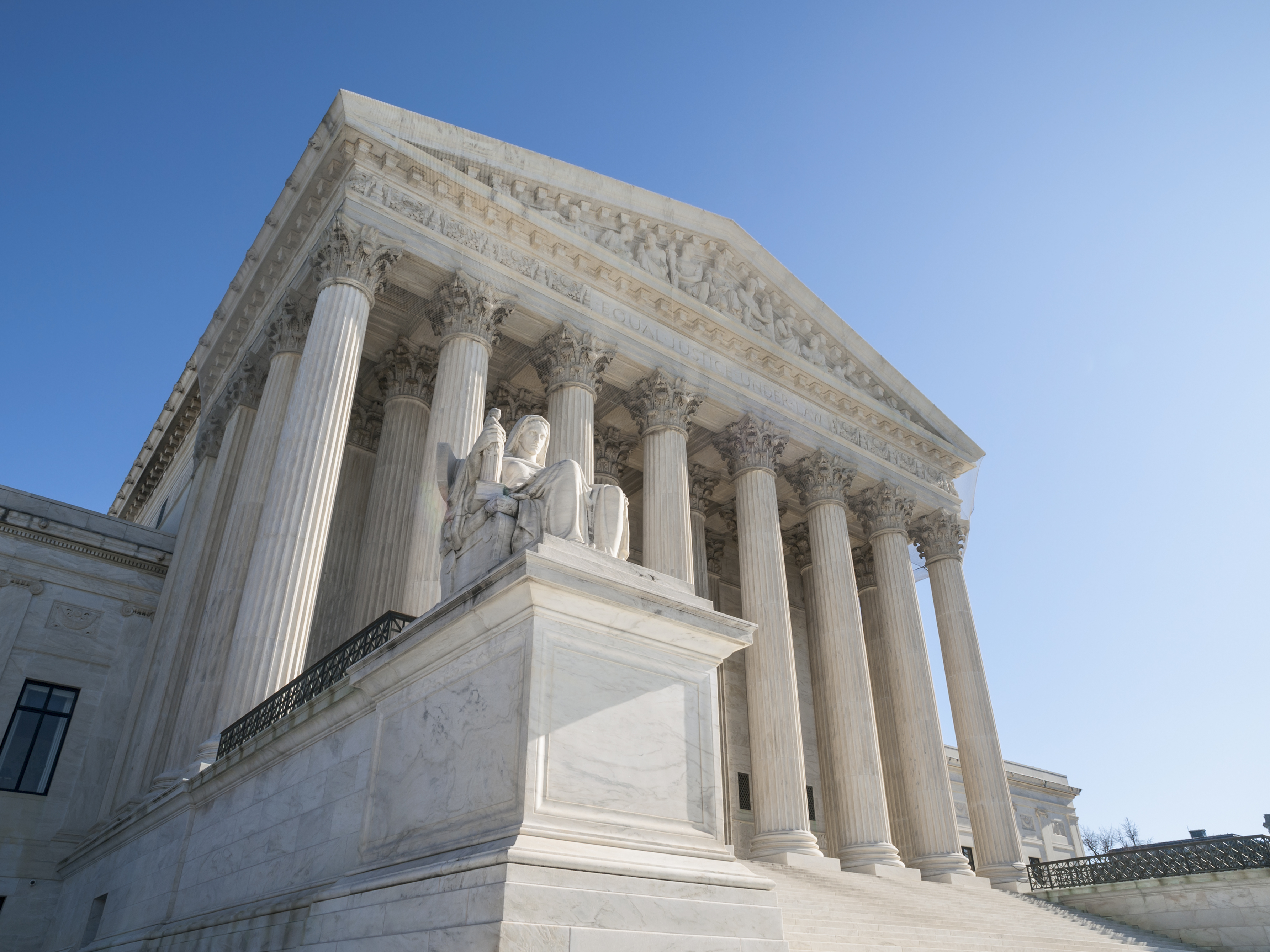
Justice Ruth Bader Ginsburg, 86, was in her usual spot at the chief justice's left, despite dealing this summer with radiation treatment for a tumor on her pancreas. Ginsburg looked fit in her black robe and distinctive white jabot, and, as usual, was an early and aggressive questioner.
The spot to Chief Justice John Roberts's right was vacant. He said Justice Clarence Thomas, 71, was "indisposed due to illness" but will participate in the cases the court considered by reading transcripts and listening to recordings of the arguments. A court spokeswoman said Thomas appeared to have the flu.
The court considered a case from Louisiana about whether a jury's verdict must be unanimous and another about whether Kansas and other states must allow an insanity defense for criminal defendants.
Outside the court, a line grew, comprising people trying to secure a spot in the courtroom for Tuesday's cases: whether federal law forbidding discrimination against workers "because of sex" covers sexual orientation and transgender status. People began camping out Friday night.
The justices experimented Monday with allowing the advocates making arguments two minutes of uninterrupted time before jumping in to ask them questions. Both the lawyers and the justices seemed a little uneasy with the arrangement.
Justice Elena Kagan appeared to be advising Justice Samuel Alito where to look for the blinking white light on the lectern that signaled when those two minutes expired.
One advocate did not use all of her time and told the justices to start interrogating.
They seemed inclined to rule that jury verdicts must be unanimous. Only two states, Louisiana and Oregon, allow convictions on variations such as 10-2 or 11-1. And Louisiana voters approved a referendum requiring unanimous votes after Jan. 1, 2019.
But that does nothing for Evangelisto Ramos, who was convicted of murder in 2016 on a 10-2 vote. He argues that the constitutional right to trial includes the right to a unanimous verdict.
But a 1972 Supreme Court precedent stands in his way. In that case the court ruled 5 to 4 that the Sixth Amendment requires unanimous verdicts in federal trials. But one of the five, Justice Lewis Powell, said unanimous verdicts were not required in state trials.
Ramos's lawyer, Stanford law professor Jeffrey Fisher, said that the decision was an outlier and that the court in other contexts has endorsed the idea of unanimity in jury verdicts.
"When the court says something is a fundamental rule under our way of doing criminal justice, the states have to follow that rule the same way as the federal government," Fisher said.
But Louisiana Solicitor General Liz Murrill said "nothing in the text, structure, or history of the Sixth Amendment requires unanimous jury verdicts." She said the state had relied on the Supreme Court's expressed approval of non-unanimous verdicts for more than 50 years, and 32,000 people are in prison under that system.
Under questioning, Murrill acknowledged that she did not know how many had been convicted by less than unanimous juries and could mount a challenge such as Ramos's.
Justice Neil Gorsuch said it was not just the state that had an interest, however.
"You say we should worry about the 32,000 people imprisoned," Gorsuch said. "One might wonder whether we should worry about their interests under the Sixth Amendment as well."
Justice Brett Kavanaugh alluded to history that indicates Louisiana and Oregon both adopted the less-than-unanimous verdict rule to diminish the impact of minority jurors who might hold out for innocence.
Those two "practical arguments" - that some were convicted when others were freed because the jury was not unanimous, and because the rules had racist roots - might be enough to overturn the court's precedent, Kavanaugh said.
The case is Ramos v. Louisiana.
The Kansas case involved whether a state may do away with the insanity defense, which bars holding someone criminally responsible when mental illness prevents him knowing right from wrong.
James Kraig Kahler killed four family members, including his estranged wife and two teenage daughters, in 2009. He was convicted and sentenced to death.
His lawyers said severe depression over the breakup of his marriage rendered him incapable of forming the intent to convict him of capital murder.
But Kansas, where the murders occurred, is one of only a few states that have gotten rid of insanity as a defense to avoid conviction. (It also points out that Kahler was aware enough to spare his son, who he thought had not sided with his mother in the divorce.)
Kansas allows a defendant instead to offer evidence of mental disease to argue he is incapable of forming intent to commit the crime.
Justice Stephen Breyer said the case raised "quite deep" questions. He wondered about one "crazy" defendant who killed someone because he believed the person was a dog, and another who killed someone he knew was a person but did it because he believed a dog had told him to do it.
"Why does Kansas say one is guilty, the other is not guilty?" Breyer asked
Kagan also found that the case raised deep questions, but she said she doubted the outcome will mean much for Kahler. In no state, Kagan told Kahler's lawyer Sarah Schrup, "would your client be found insane."
The case is Kahler v. Kansas.
Sign up for the daily JWR update. It's free. Just click here.
(COMMENT, BELOW)


 Contact The Editor
Contact The Editor
 Articles By This Author
Articles By This Author